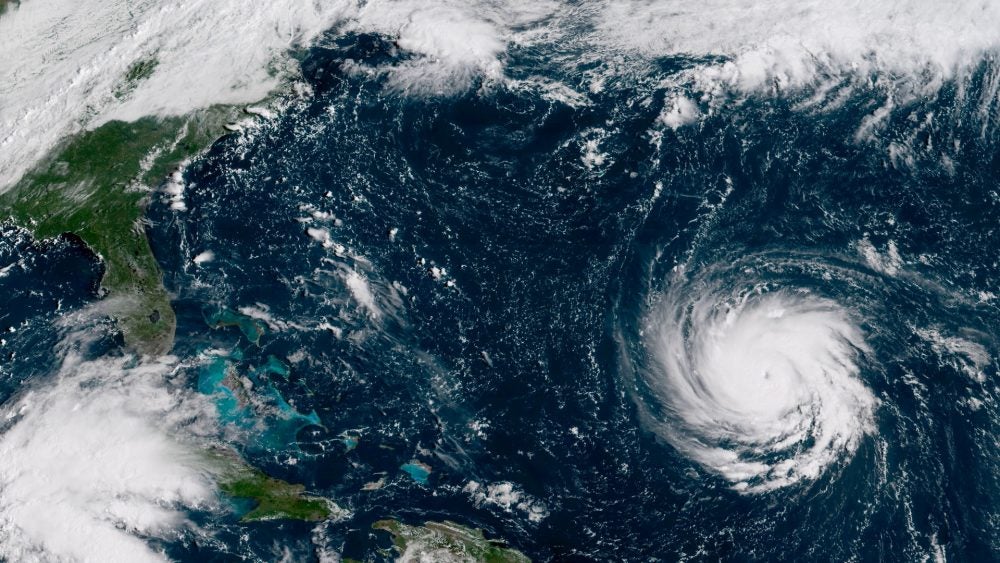
Photography courtesy of NOAA
Hurricane models being developed at the University of Rhode Island’s Graduate School of Oceanography will make forecasting hurricanes in New England more precise and offer real-time updates for first responders and public officials.
It is notoriously difficult to forecast hurricanes in New England, says Isaac Ginis, professor of oceanography. When storms move north, they develop a more complex wind structure than those remaining in the Southeast and the Gulf of Mexico, their paths become more erratic, and the region’s complicated topography makes predicting their movement over land especially challenging. In addition, the relatively short rivers in New England fill up quickly when it rains and cause more flooding than in many other areas.
The hurricane models Ginis and his colleagues are developing will address these difficulties and make forecasting hurricanes in New England more accurate. The models will even predict the storm impact on particular roads, bridges, and buildings in the area.
“We’re working to improve existing models and create new modeling capabilities to address concerns about coastal inland flooding due to storm surge, inland flooding due to heavy rainfall, and the challenges of predicting winds over land,” said Ginis. His models have been used by the National Hurricane Center for more than 20 years.
